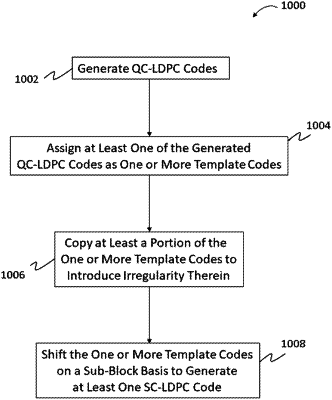| CPC H03M 13/116 (2013.01) [H03M 13/1154 (2013.01); H03M 13/616 (2013.01)] | 21 Claims |

|
1. A method for generating spatially-coupled low-density parity- check (SC-LDPC) codes, comprising:
generating one or more quasi-cyclic low-density parity-check (QC-LDPC) codes, where the one or more QC-LDPC codes are represented by one or more parity-check matrices;
assigning at least one of the generated one or more QC-LDPC codes as one or more template codes;
copying at least a portion of the one or more template codes to introduce irregularity therein; and
shifting the one or more template codes within a SC-LDPC code matrix on a sub-block basis to generate at least one SC-LDPC code.
|